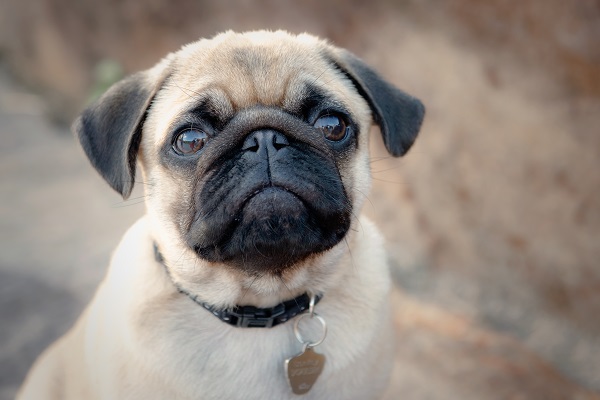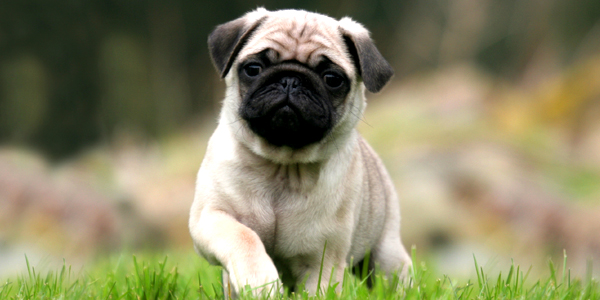It doesn’t matter which dog breed you own; you will care deeply about its well-being. You will take every health problem, small or big, extremely seriously. However, if you have a pug, you may need to give it extra attention.
The foremost thing you must do is get the right pet insurance. What does pet insurance cover? Coverage includes vet bills – emergency or otherwise – and processes and medication.
Unfortunately, there are many people who can’t afford to spend thousands of dollars on a vet bill they did not expect. So why is your pug going to need extra protection? Here is what you need to know about your pug.
Basic Facts About Pugs
The most prominent member of the AKC-defined toy group, full-grown pugs, stand about 10-11 inches tall at the shoulder and weigh anywhere from 14 to 18 pounds. They are square and sturdy in body but with relatively long legs.
They are cute, small, low maintenance, and generally very nice and comedic. But, on the other hand, their wrinkled faces and big, expressive eyes make them always look curious. Also, their curled tails seem to be wagging.
Appearance
The face of a pug is one of its most cute features. It is undoubtedly the most recognizable trait. It is because it is mainly flat compared to other dogs, and pugs are therefore known as a hardly brachycephalic (flat-faced) breed. Unfortunately, this also makes pugs prone to a range of medical necessities.
According to the American Kennel Club, it’s usually said that the pug’s motto is “multum in parvo” because these small dogs have a lot of muscle in their square frame and all while weighing in at 14–18 pounds. Pugs come in two standard colors with several tonal interpretations: fawn with a black mask or all-black.
The tan or fawn coat color ranges from a warm apricot to a cool, rarely-seen silver. Their heads feature their signature short, flat, black muzzles coated with deep wrinkles. In addition, they sport moles on their cheeks, called “beauty spots,” and a distinctly defined “thumb mark” on their forehead.
Living Needs
Kids love pugs, and as they are a toy breed, it is a bit more difficult than other similar-sized pups, and they are always up for playtime. Avoid disappointment and ensure the kids know pugs aren’t likely to chase a soccer ball or play.
Pugs are amenable to getting along with anyone, including cats, dogs, rabbits, and other animals. Pugs also make great friends for those living in apartments and older individuals as they don’t need too much indoor space for activity. Of course, we’re not necessarily saying pugs are sluggish, but they are known to sleep up to 14 hours daily!
Common health concerns for pugs
Allergies:
Pugs are prone to both environmental and food allergies. Common symptoms include licking paws, excessive scratching, raw or scaly skin, and diarrhea. Pugs’ wrinkly faces are also prone to the skin condition dermatitis, whose signs include thinning of fur, itching, and redness.
Be sure to keep your pug’s wrinkles dry and clean, and consult your vet about medicated wipes and shampoos, which can help lessen and prevent infection.
Dental problems:
Like many small dog breeds, Pugs are more prone to periodontal disease due to overcrowded teeth, though x-rays may be required to detect it. Undiagnosed periodontal disease can cause pain, tooth loss, and even more serious health issues like heart disease.
Start a daily tooth-brushing practice at home, get your dog’s teeth regularly checked by your vet, and get professional cleanings if required.
Brachycephalic Airway Syndrome:
Pugs have less runway to bring oxygen into their bodies than all brachycephalic dogs. Though their heads are shorter, they have the same amount of soft tissue making up their airways as regular snouted dogs, often meaning their airways are at least partially obstructed.
It puts pugs at risk for extreme respiratory pain and may need surgical intervention, specifically if they have restricted nostrils.
Heat stroke:
Pugs have problems regulating their body temperature due to their short snouts. That means it’s challenging for them to remain cool in higher temperatures.
Therefore, they are prone to heat stroke, specifically when exposed to temperatures above 70 degrees for more than 10-20 minutes. Symptoms of overheating include glassy eyes, excessive panting, pale gums, and disorientation.
Read Also: Teacup Pug – Complete Guide On Teacup Pug Care
Eye problems:
Owing to the size, shape, and placement of a pug’s eyes—they have a shallow eye socket that allows their eyeballs to protrude excessively—they are prone to several eye issues like conjunctivitis, corneal ulcers, dry eye, and even proptosis.
In this trauma-response condition, the eye pops out of its socket. Some conditions, like corneal ulcers, need medical intervention in medicated drops. Watch your pug’s peepers and speak to your vet at the first indication of red, itchy, squinty, goopy, etc.
Conclusion
Because pugs are at risk of all these conditions, taking care of a pug’s health needs a proactive strategy. Pugs are prone to weight gain due to their problems, which can exacerbate their risk of other health conditions.
Therefore, you must ensure your pug gets the right exercise and food. In addition, pugs are at risk of several health conditions due to how they were bred.
While this does not mean all pugs will suffer from poor health, it does mean that they need extra protection. So make sure to give your pug good health, exercise, and regular checkups.
 DogExpress
DogExpress






















 in Chandigarh, India.
in Chandigarh, India. 

